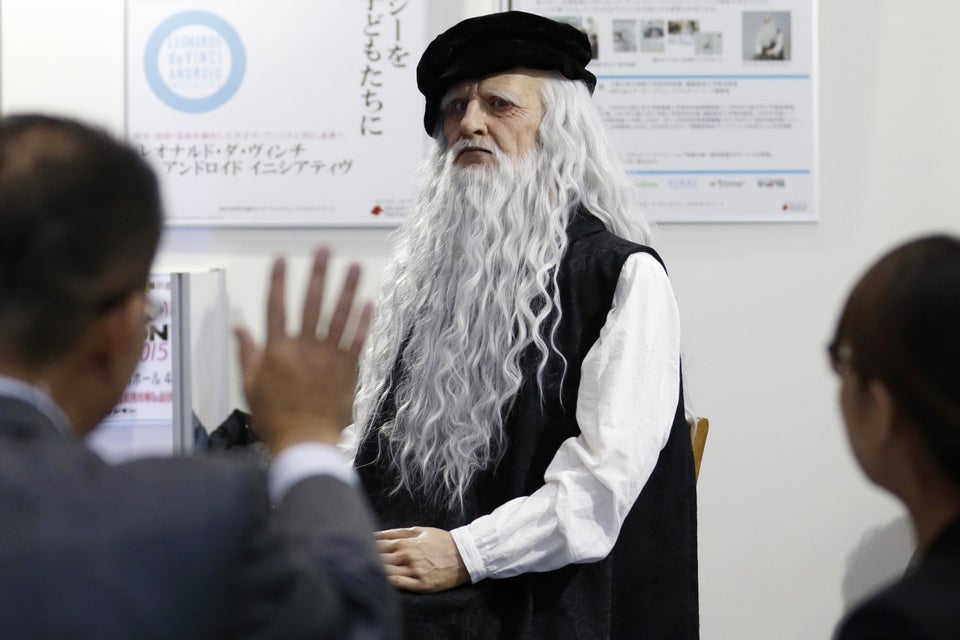Quadruped robots could soon be an important tool for replacing humans in dangerous situations. The maneuverability of advanced four-legged robots means they can navigate uneven terrain and could aid rescue efforts and disaster recovery scenarios.
No matter how agile a legged robot is, however, their role has traditionally been limited to load carrying or observation tasks.
A team of robotics engineers from the Italian Institute of Technology (IIT) in Genoa have designed a robotic arm that they've attached to one of their flagship HyQ quadruped robots in order to give it manipulation capabilities.
According to Claudio Semini, head of the Dynamic Legged Systems (DLS) lab, future quadruped robots operating in real-world applications will most likely need a degree of manual dexterity.
"For us, it was natural to start to design also an arm, and then the plan is to build two arms and have them both on the robot to create a 'centaur' style of robot. And with the two arms the robot can be deployed to the real area where it needs to do any maintenance work or turn a valve in a rescue scenario or pick up a sample in a contaminated area or just clean up radioactive materials; there's a lot of potential future applications where manipulation is really important," Semini told Reuters.
Eventually, their centaur-style robot will consist of a quadruped locomotion platform and a pair of arms. Currently, the team is testing one prototype arm attached to the front of the four-legged robot. To demonstrate how the HyQ-Centaur could operate, an obstacle is placed in its path with the robot arm being remotely controlled to knock it out of the way.

The hydraulically actuated arm was designed by PhD student Bilal Ur Rehman who explained that the arm not only adds dexterity to the robot but can aid its maneuverability.
"Right now this arm can carry 10 kg when it's fully extended. It's total weight is 12.5 kg, so it can almost carry the same external load as its own weight. It's also pretty fast with the hydraulics speeds. You can use it as a counter force if you apply an external force on the body of the robot. You can use the arm as a tail as well to counter the external forces," said Rehman.
The additional weight of the arm and the forces exerted by its motion gave the roboticists an added hurdle to overcome. They developed algorithms that 'train' the robot to ignore the external disturbances and remain stable.
"If we have a moving mass in front, that creates also a disturbance in the legs. So what we're developing is algorithms that can take into account that external disturbance from the payload or from the arm. And then servo the legs, control the legs in a way to compensate for these disturbances. And we've managed to do this very well; there's an example where we moved the arm left and right relatively fast, and if we don't use the smart controller the robot moves a lot. But if we turn on the smart controller, the torque and forces in the cylinders and joints are optimized so that the robot is relatively firm and rejects all these external disturbances," said Semini.
The HyQ robot was first presented as part of Semini's PhD thesis in 2010. It shares similarities with quadruped robots developed by other institutions, such as Spot the dog robot developed by Google's Boston Dynamics. But Semini said that while seeing a robot running and balancing in a mainly reactive way looks impressive, the real test comes when such a robot has to cross very rough terrain where a carefully planned foot placement is vital. Much of their research is focused on developing algorithms that help HyQ decode its surroundings and plan the next footsteps, said Semini.
"Compared to other teams in China and the U.S. we have focused a lot on the versatility. So this (HyQ) platform can do many different motions ranging from very fast motions like a run or a jump. But it can also do the more careful navigation on rough terrain where we need to plan really one foothold after the next. And this is important, once we see the 3D map of the environment we can start to understand how to best move through that environment," he said.
"We don't want to be the fastest or the best climber, but we want to have a machine that can do many of these motions; as in the real world, the machine will need to have many different skills."
Also on HuffPost:

